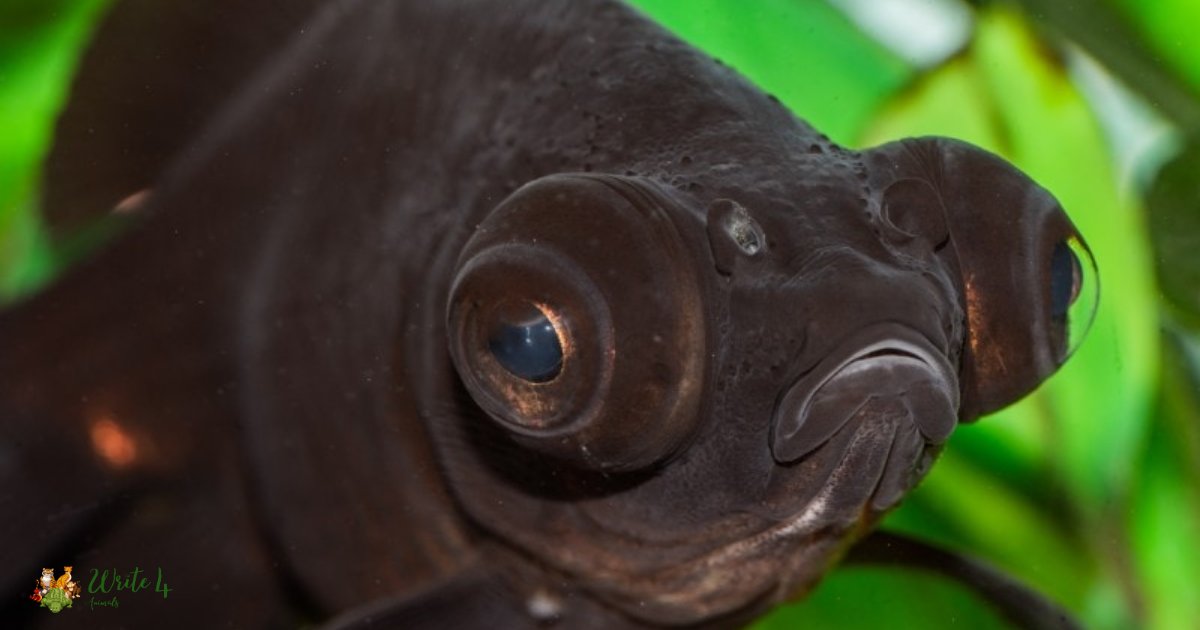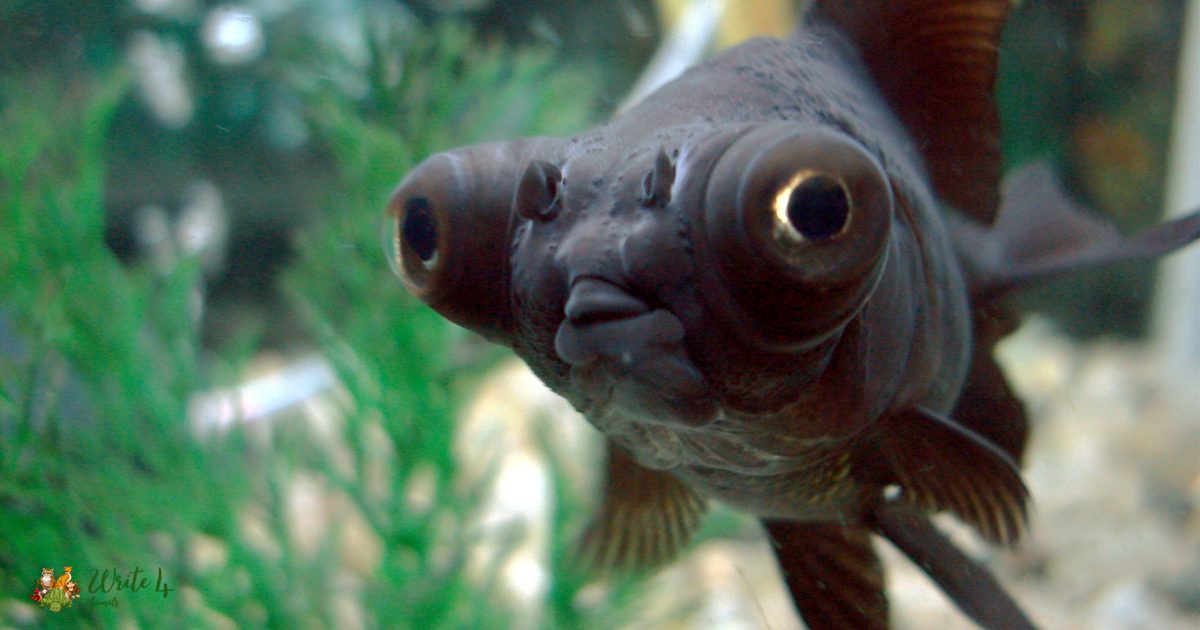Diving into the mysterious depths of the ocean, one encounters a diverse array of marine life, each species uniquely adapted to its environment. Among these creatures, black fish with big eyes stand out as both intriguing and captivating. Their dark hues and striking ocular features make them a fascinating subject of study for marine biologists and enthusiasts alike.
In this blog post, we will delve into the depths to uncover the top 10 black fish with big eyes, shedding light on their characteristics, habitats, and significance in the underwater world.
About Black Fish with Big Eyes
Characteristics of Black Fish with Big Eyes
Black fish with big eyes encompass a diverse range of species, each possessing its own unique set of characteristics. However, there are some common traits that unite them:
Coloration: As the name suggests, black fish are typically characterized by dark hues, ranging from deep ebony to charcoal black. This coloration serves as a form of camouflage, allowing them to blend into their surroundings and evade predators or ambush prey.
Eye Size: One of the defining features of black fish with big eyes is, of course, their disproportionately large ocular organs. These oversized eyes serve various functions, including enhanced vision in low light conditions, improved depth perception, and heightened sensitivity to movement and potential threats.
Adaptations for Low Light Environments: Many black fish inhabit deep-sea or dimly lit environments where sunlight penetration is limited. As a result, they have evolved specialized adaptations to thrive in these challenging conditions, such as bioluminescent lure structures, heightened sensory organs, and elongated bodies for efficient movement in the water column.
Habitats of Black Fish with Big Eyes
Black fish with big eyes are found in a variety of aquatic habitats, ranging from shallow coastal waters to the dark depths of the abyssal zone. Some common habitats include:
Deep Sea Trenches: Species such as the black seadevil (Melanocetus murrayi) and black dragonfish (Idiacanthus atlanticus) are commonly found in the darkest depths of the ocean, residing in trenches thousands of meters below the surface.
Coral Reefs: Other species, like the blacktip reef shark (Carcharhinus melanopterus) and black ghost knifefish (Apteronotus albifrons), inhabit coral reef ecosystems, where they play vital roles in maintaining the health and biodiversity of these vibrant underwater communities.
Pelagic Environments: Pelagic species such as the bigeye tuna (Thunnus obesus) and blackfin tuna (Thunnus atlanticus) are highly migratory and can be found roaming the open ocean in search of food and favorable temperature gradients.
Ecological Significance
Black fish with big eyes play crucial roles in marine ecosystems, contributing to the balance and stability of aquatic food webs. Some of their ecological significance includes:
Apex Predators: Many black fish species, such as sharks and tunas, occupy upper trophic levels and serve as apex predators, regulating the populations of prey species and maintaining ecosystem balance.
Prey Species: Conversely, some black fish serve as important prey items for larger predators, forming an essential link in the marine food chain and facilitating energy transfer between trophic levels.
Ecosystem Engineers: Certain black fish species, like the black drum (Pogonias cromis), are ecosystem engineers, actively shaping their habitats through behaviors such as substrate disturbance and sediment reworking.
Cultural Significance
Beyond their ecological importance, black fish with big eyes also hold cultural significance in various societies around the world. From mythological symbolism to culinary traditions, these creatures have woven themselves into the fabric of human culture in diverse ways:
Mythology and Folklore: In many cultures, black fish are featured prominently in mythological tales and folklore, often representing themes of mystery, power, and transformation. For example, the black dragonfish is associated with mythical sea serpents in various maritime legends.
Art and Literature: Artists and writers have long been inspired by the mesmerizing beauty and otherworldly qualities of black fish with big eyes, incorporating them into paintings, sculptures, and literary works as symbols of the unknown and the sublime.
Gastronomy: In culinary traditions around the world, black fish are prized for their flavorful flesh and nutritional value. Whether grilled, fried, or served raw in sushi, these delicacies are enjoyed by seafood enthusiasts and gourmands alike.
Conclusion
In conclusion, black fish with big eyes represent a fascinating and diverse group of marine organisms that inhabit a wide range of aquatic environments. From the depths of the ocean trenches to the vibrant coral reefs, these creatures captivate with their unique characteristics and play essential roles in marine ecosystems.
Whether admired for their ecological significance, cultural symbolism, or gastronomic appeal, black fish with big eyes continue to inspire wonder and curiosity among scientists, artists, and enthusiasts alike, reminding us of the boundless wonders that lie beneath the waves.
Frequently Asked Questions
What are some examples of black fish with big eyes?
Some examples of black fish with big eyes include the blacktip reef shark, bigeye tuna, black drum, black seadevil, black ghost knifefish, and black dragonfish. These species exhibit a wide range of behaviors, habitats, and ecological roles, contributing to the diversity and complexity of marine ecosystems.
What is the significance of big eyes in black fish?
The large eyes of black fish serve several important functions, including enhanced vision in low light conditions, improved depth perception, and heightened sensitivity to movement and potential threats. These adaptations are especially crucial for species that inhabit deep-sea environments or rely on visual cues for hunting and navigation.
Where can black fish with big eyes be found?
Black fish with big eyes can be found in a variety of aquatic habitats around the world, including coral reefs, deep-sea trenches, pelagic environments, and freshwater rivers and lakes. Their distribution is influenced by factors such as water temperature, food availability, and habitat complexity.
What is the ecological importance of black fish with big eyes?
Black fish with big eyes play important ecological roles in marine ecosystems, serving as apex predators, prey species, and ecosystem engineers. They help regulate the populations of prey species, facilitate energy transfer between trophic levels, and contribute to the overall health and biodiversity of aquatic ecosystems.
Are black fish with big eyes endangered?
Some species of black fish with big eyes may be threatened or endangered due to habitat loss, overfishing, pollution, and other human-induced pressures. Conservation efforts are underway to protect these species and their habitats, including the establishment of marine protected areas, sustainable fishing practices, and public awareness campaigns.
Can black fish with big eyes be kept in aquariums?
Some species of black fish with big eyes can be kept in aquariums, provided that their specific habitat requirements are met. However, certain species may require large tanks, specialized equipment, and experienced care to thrive in captivity. It’s essential to research each species’ needs carefully before attempting to keep them in an aquarium setting.
Recommended
1. Top 10 hypoallergenic cats in the World
2. Top 10 miniature animals in the World

